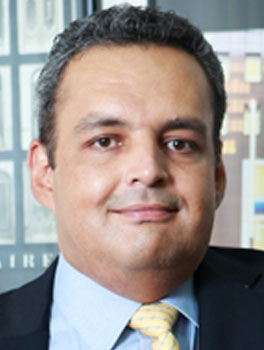
Sainsbury: What are your priorities for the next 12-18 months?
Paredes: Citibank Vietnam initiated its consumer bank operation relatively recently. So far we have successfully launched credit cards, personal loans, deposits, Citigold as our premium integrated offering, insurance, referrals to our International Personal Banking for foreign residents in Vietnam, and are working on other products and services. For the next 12-18 months our priority is to, based in these value propositions, continue to grow our customer base, but with careful attention to the service aspects of the business. We have a robust service quality program through which we focus on consistently delivering our customer experience based on convenience and service; for instance, our branches are open until 8 o’clock and customer can access their accounts 24×7 either through online, mobile or Citiphone.
Sainsbury: As one of the largest foreign banks in Vietnam, what unique challenges and opportunities does the market offer, and how can you leverage Citi’s global infrastructure to provide competitive advantage?
Paredes: We believe we stepped into just the right time when the Vietnam’s economy was showing positive signs. This, together with our capacities, turned into pros for Citibank. The success of our credit cards has been exceptional for the last three years. We then began offering a proposition based on real value to customers based on their profile: we launched the first travel card, then cash back and now the first partnership with insurance. This is an example of the opportunity of this market, where if you can bring to bear the experience we have gained in other markets, you can really influence the behaviour of the Vietnamese market. This is also a very dynamic market with excellent demographics and perspectives of growth. With the previously mentioned approach, we believe we can position ourselves for the future.
Sainsbury: What are proving to be your most effective customer acquisition channels in Vietnam?
Paredes: Vietnam is a deeply connected country. It has more than 39 million monthly active internet users and the penetration of smartphones is significantly increasing. For acquisition these remote channels, along with direct sales are proving to be the most effective. But given the rapid evolution of the market, we believe digital channels will be the prominent over the next few years, including servicing and transaction processing.
Sainsbury: How is Citi leveraging technology to enhance the retail experience for consumers?
Paredes: As mentioned, Vietnam is very young and digitally active market. Therefore technology becomes key to engage Vietnamese customers, just like in any other market.
To address this opportunity, we think about technology as a way to provide convenience to customers by being able to access the bank whenever they choose to, and also as a way to facilitate other interactions.
On the first point, Citi launched internet and mobile services in 2010, allowing balance displays and funds transfers and payments. These transactional capabilities are enhanced by our Citibank Global Transfer (CGT) service, which allows customers to transfer money in real time to more than ten markets around the world. Mobile, in addition to this, allows the bank to introduce location-based tools in order for customers to know where a benefit or reward is available, and immediate access through QR codes to information about offers or about how to open an account or access a service. For those who prefer to speak to a person, Citi has also enhanced its manned services (branches until 8pm and Citiphone 24/7.
On the second, we are rolling out tools and applications that have been developed in other markets that make the experience more pleasant in branch. A prominent feature is a tool we call “the workbench” (now operational in Hanoi and within a few weeks in Ho Chi Minh City), where customers can open accounts without any need for paperwork and can complete the process quickly and seamlessly. The bank also plans to implement a new tool this year that will enable customers to access 80 per cent of regular branch transactions through an ATM-like device that will allow them to conduct cash related transactions in more locations at all times.
In the end, it’s all about customer convenience and choice, our job is to offer the best alternatives across all channels, and definitely our mobile application and location-based offers need to be a necessary companion to all products.
Sainsbury: What tools or references keep you abreast of emerging technology trends?
Paredes: We believe Citi has always been at the forefront of innovation. Since the pioneering of the ATM in the 70’s, the creation of the certificate of deposit, or the development of globally interconnected systems, we have always been interested in developing a more efficient and effective network through which to offer better services.
Currently, Citi has a Ventures and Innovation facility that is located in California, USA, where a group of specialised individuals work on identifying and implementing opportunities for better servicing customers or to build new business models for Citi. As part of this effort, concepts like Smart Banking and other ventures have been brought to life. This area keeps in touch with one of the most vibrant communities in the technology world and disseminates this innovation thinking across the organisation.
Sainsbury: How do you encourage a culture of innovation within your team?
Paredes: Innovation, efficiency and efficiency can only be based on one thing: the customer. Only through understanding our customer, what they need, what they use, how they lives and what they aspire to, can we can get the lead of where to look for the next big thing. We encourage everyone to get familiar with our customer segments, to understand them, and then see our products not as products, but as solutions to fulfil a specific need. If we constantly assess the efficiency of our solutions and how they’re delivered (the customer experience) from a customer perspective, we will identify those areas where gaps exist and where we can make a difference.





